Fail Safe Guide for Coregistration
- Details
- Category: Coregistration: Functional-Anatomical
- Last Updated: 11 April 2018
- Published: 11 April 2018
- Hits: 3324
This is a guide that shows an alternative way to do the coregistration, which is meant for cases where the automatic steps don’t work out. Even with missing or erroneous positioning information in the FMR or VMR header, it should still provide you with the option to use the gradient based alignment and that way obtain the best possible result.
- Open the FMR you want to use for coregistration and make sure the slices are shown in an inferior to superior order. Even if the slices are scanned under an angle, make sure the first slice is the bottom slice and the last slice the top slice.
You can change the order of the slices if needed in File → FMR properties → Options (at the bottom) → Choose Reverse order of slices → Modify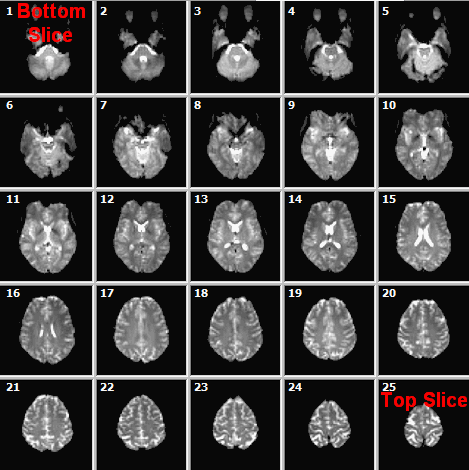
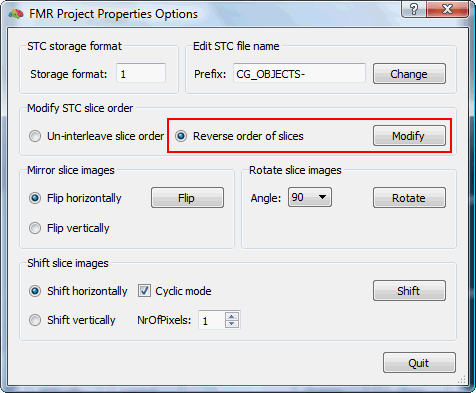
- Make sure the VMR you want to use for coregistration is in 1mm iso voxel space first and then also in Brainvoyager's sagital orientation.
- In the coregistration tab select the FMR you want to use and envoke the coregistration dialog by pressing the align button
- In the source options tab first check Flip slice order and after that click the ToSag button.
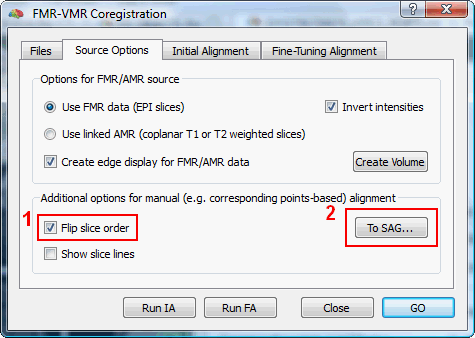
- In this dialog you need to bring the FMR in Sagital Orientation. Almost always this can be achieved by first pressing “Y +90” and then “Z +90”. If you get lost with too many rotations you can use the Clear button to start from scratch again.
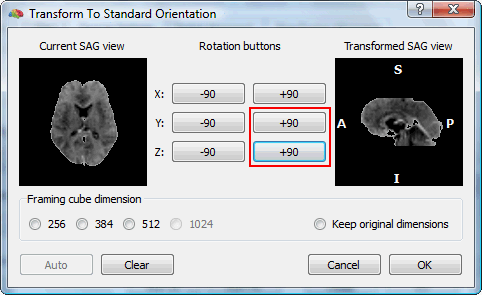
- Now we move on to the Initial alignment dialog where you need to select the option “manual alignment – use “ToSag” matrix” and then do the initial alignment by pressing the “Run IA” button.
You should have ended up now with the green edges of the FMR overlaid on top of the VMR. They will be in the same sagital orientation, but probably not in the correct position.

The gradient based fine tuning alignment will only work if the FMR is quite close to the optimal position (maximally 15mm away) when the calculations start. Luckily you can manually help to get a better starting point for the fine tuning alignment by changing the translation and rotation parameters in the coregistration tab.
- Change the translation and rotation parameters in the coregistration tab to better align the FMR (green overlay) with the VMR. Often you only need to move the FMR up (negative Z translation) and maybe in the posterior direction (positive Y). Only in case the slices were scanned under and angle, you would need a positive X rotation.
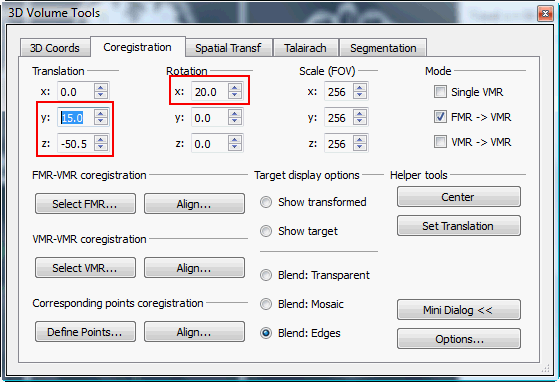

Don’t spend a lot of time on getting it as good as possible. Getting the alignment close to optimal is good enough and the algorithm will do the rest. - All you need to do after this manual improvement is go back to the coregistration dialog and press the “Run FA” button. The translation and rotation parameters you entered will automatically be used as starting point for the gradient based alignment, which is the default option. The final coregistration result will look somewhat like the picture belo

The created IA and FA transformation files can be used to create a VTC, which after linking can be visualized in Spatial Transformations Tab of the 3D volume tools. Using F8 and F9 you can then verify the position of your VTC with respect to the anatomy as a final check that the coregistration worked out.